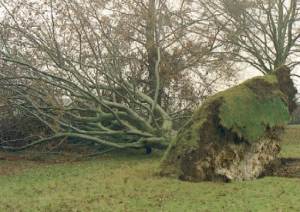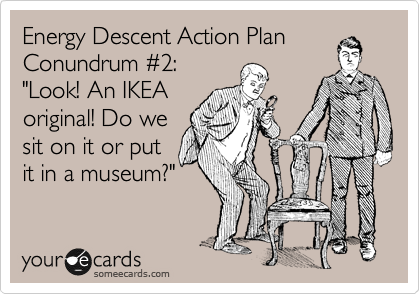 After setting up our first meeting of TTW’s newly created EDAP group, I have made a list of all the obvious bits and pieces that we need to complete and add to the growing document that will eventually become Worthing’s Energy Descent Action Plan (I’m sure the non-obvious bits and pieces will come to light in the coming months too!)
After setting up our first meeting of TTW’s newly created EDAP group, I have made a list of all the obvious bits and pieces that we need to complete and add to the growing document that will eventually become Worthing’s Energy Descent Action Plan (I’m sure the non-obvious bits and pieces will come to light in the coming months too!)
One item that we have only scratched the surface of so far is ‘resilience indicators’. What?
Well, you know, ‘resilience indicators’ sounds much worse than they really are. It’s how we could/can measure how resilient our town is/could be. As soon as we mention the word resilience, I’m just hoping that people’s eyes don’t glaze over. I mean, I think it’s a great word, and I tend to use it all the time, hoping that the more I do, the more people will absorb it through some kind of verbal osmosis and be tuned in . . . Back in the real world, we all know that it doesn’t tend to work like that.
The way that I have most recently heard resilience defined within the Transition movement by Rob Hopkins is by quoting Iain Dowie, manager of Crystal Palace FC: ‘bouncebackability’ (!) The Urban Dictionary.com defines ‘bouncebackability’ as ‘the ability to bounce back usually implying a fighting spirit’. Now, not being a footballing fan, I can still appreciate the sentiments involved in the word. Being a geographer, I am quite excited by made-up words (studentification being a great example of this – meaning an area of a university town which has become populated by large numbers of student residences). My own preference would be to refer to Alan Partridge and his first autobiographical attempt to regain his position in the world of light entertainment, ‘Bouncing Back’
In terms of a town, resilience becomes the ability of that place to cope, deal with, and respond to a shock or impact, such as economic meltdown or sky-rocketing petrol prices (both of which a re entirely plausible in the short to medium term). If Worthing was hit by one or both types of shock, how would it cope? At present, the answer is probably ‘very badly’ as Worthing has little in terms of a thriving local economy or food production.
‘Bouncing back’ is probably quite apt for Worthing, because in 2011, it is a long way off being resilient. Just a quick peek at the shops in the centre of town show three key areas of growth: chain-stores; mobile phone shops; and closed-down shop premises. I’m sure this is a similar picture for many towns in the UK. In recent months, even a few of the national chains have been closing high street branches down as they relocate to out-of-town sites (e.g. Currys, November 2011).
Worthing has the feel of a town that has nowhere else to go, but ‘bouncing back’ as transition-related projects take root seems appropriate. This is especially the case when you consider the Worthing of living memory. Back in the 1940s and 1950s, Worthing had huge areas of market gardens growing tomatoes, cucumbers and flowers. Local shopping areas were filled with family-run small businesses, and local dairies supplied the population with milk and cheese. We had a degree of resilience 60 years ago. Since then, it has gradually been eroded as we have come to rely on road transport, imported mass-produced goods and food from anywhere but the local area.
So, how could we begin to measure how much resilience Worthing has? How can we assess whether or not the town has ‘bounced back’? Some ideas have been coming in following our EDAP World Cafe back in June:
- Percentage of locally owned businesses in main shopping streets.
- Number of people working locally and at home.
- Number of people commuting in and out of Worthing.
- Percentage of food grown within a 30 miles radius of Worthing
- Number of schools teaching basic gardening and food growing skills
- Number of school/college leavers who have practical skills (e.g. construction, carpentry, plumbing)
- Number of productive domestic food gardens
- Amount of energy produced by community-owned renewable energy generation
- Percentage of domestic and public buildings with solar PV generating capacity
The Transition Handbook (2008) sets out resilience indicators like this:
Carbon footprinting and the cutting of carbon emissions are clearly a crucial part of preparing for an energy-lean future, but they are not the only way of measuring a community’s progress towards becoming more resilient. In the Transition approach, we see cutting carbon as one of many ‘Resilience Indicators’ that are able to show the increasing degree of resilience in the settlement in question. Others might include:
- – the percentage of local trade carried out in local currency
- – percentage of food consumed locally that was produced within a given radius
- – ratio of car parking space to productive land use
- – degree of engagement in practical Transition work by local community
- – amount of traffic on local roads
- – number of business owned by local people
- – proportion of the community employed locally
- – percentage of essential goods manufactured within a given radius
- – percentage of local building materials used in new housing developments
- – percentage of energy consumed in the town that has been generated by local ESCO
- – amount of 16 year olds able to grow 10 different varieties of vegetable to a given degree of basic competency
- – percentage of medicines prescribed locally that have been produced within a given radius
Clearly some of these indicators are easier to measure than others, but we can start to build a image of what a resilient, ‘bouncing back’ community might look like. Worthing’s EDAP group are continuing to develop a range of measurements that have relevance to Worthing. The starting point is to determine where we are now, taking the measurements as a 2011 benchmark. Progress on these would then show whether Worthing is becoming more or less resilient over time.
I quite like to use different images to explain how transition can work. The image I’ve used previously for ‘resilience’ is that of a tree blown down in the Great Storm in 1987 in southern England. Despite have being uprooted with only a third of its roots left in the ground, the tree has just got on with sending out new shoots and getting on with the business of being a tree. Other images included an oil drum (obvious), a book (hmmm), a chisel (cheeky), and Johnny Rotten (challenging). Answers on a postcard to the usual address!













